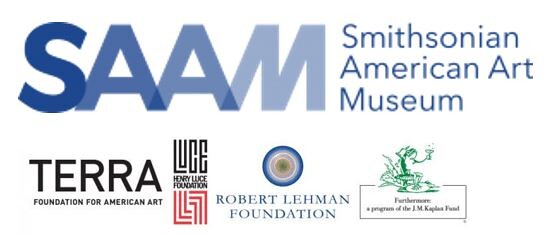Fall 2020
The Smithsonian American Art Museum presents a six-part online lecture series that examines the profound impact of Alexander von Humboldt, a renowned Prussian naturalist and explorer and one of the most influential figures of the 19th century. Talks by historians of art and science and contemporary artists address how Humboldt’s observations and ideas from 200 years ago resonate with even greater relevance today in the face of climate change.
Registration is required.
Speakers
Eleanor Jones Harvey, senior curator, Smithsonian American Art Museum
September 16, Humboldt and the United States: Art, Nature, and Culture
Andrea Wulf, author
September 23, The Invention of Nature: Alexander von Humboldt’s New World
Randall Griffin, professor of art history, Southern Methodist University
October 7, Georgia O’Keeffe’s Aerial River Series, Gaia, and the “Web of Life”
Dario Robleto, artist-in-residence, University of Houston, Cullen College of Engineering
October 14, The Curious Confront Eternity
Tom Lovejoy, professor of environmental science, George Mason University
October 21, Alexander von Humboldt: Polymath of His Time
George Steinmann, artist, musician, and researcher
October 28, Looking from Within: Art in the Horizon of the UN Agenda 2030
This series is part of the online programming created in conjunction with Alexander von Humboldt and the United States: Art, Nature, and Culture. This landmark exhibition, organized by Eleanor Jones Harvey, examines Humboldt’s impact on five spheres of American cultural development: the visual arts, sciences, literature, politics, and exploration, between 1804 and 1903. The exhibition centers on the fine arts as a lens through which to understand how deeply intertwined Humboldt’s ideas were with America’s emerging identity, grounded in an appreciation of the landscape. Humboldt’s quest to understand the universe—his concern for climate change, his taxonomic curiosity centered on New World species of flora and fauna, and his belief that the arts were as important as the sciences for conveying the resultant sense of wonder in the interlocking aspects of our planet—make this a project evocative of how art illuminates some of the issues central to our relationship with nature and our stewardship of this planet.
Additional information about the exhibition and updates about visiting the museum are at americanart.si.edu.
Book
The companion catalogue, published by the Smithsonian American Art Museum in association with Princeton University Press, shows how Humboldt inspired a network of like-minded individuals who would go on to embrace the spirit of exploration, decry slavery, advocate for the welfare of Native Americans and extol America’s wilderness as a signature component of the nation’s sense of self. Eleanor Jones Harvey traces how Humboldt’s ideas influenced the transcendentalists and the landscape painters of the Hudson River school, and laid the foundations for the Smithsonian, the Sierra Club, and the National Park Service.
Credit
Alexander von Humboldt and the United States: Art, Nature, and Culture is organized by the Smithsonian American Art Museum with generous support from Joanne and Richard Brodie, Billings and John Cay, Fern and Hersh Cohen, Sheila Duignan and Mike Wilkins, Embassy of the Federal Republic of Germany, Marie M. Halff, Liliane A. and Christian W.E. Haub, Raymond J. and Margaret Horowitz Endowment, Kandeo Asset Management, Maureen and Gene Kim, LATAM Trade Capital, Robert Lehman Foundation, Henry Luce Foundation, The Lunder Foundation – Peter and Paula Lunder Family, Provost of the Smithsonian, Lucy S. Rhame, Holly and Nick Ruffin, Jacquelyn and William Sheehan, Smithsonian Scholarly Studies Awards, Terra Foundation for American Art, and Kelly Williams and Andrew Forsyth.
This exhibition is supported by an indemnity from the Federal Council on the Arts and the Humanities. The accompanying catalogue is supported by Furthermore: a program of the J.M. Kaplan Fund.
The lecture series The World of Alexander von Humboldt is made possible by support from the Provost of the Smithsonian for Earth Optimism programming.


